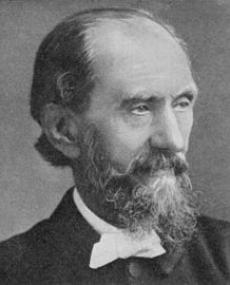
Andrew Murray was born in Graaff-Reneit on 9 May 1828, the second child of Andrew Murray senior. He was sent to Arberdeen, Scotland to be educated, where he remained until 1845 when he graduated with a Masters degree. The same year he went to Utrecht the Netherlands for further theological studies. In 1848 at the age of nineteen he experienced a conversion to Christianity. He returned to the Cape in 1848 after having been ordained as a Minister as The Hague.
In Cape Town Governor, Sir Harry Smith sent Murray to serve the whole of Orange River Sovereignty which consisted of four parishes, Bloemfontein, Rietpoort, Rietrivier and Winburg. From 1849 to 1852 he travelled extensively to service and baptize people. He mitigated the feelings of the Voortrekkers against the Cape Church, which was opposed to the Trek. In 1850 he was called to the Transvaal; a petition with 1100 signatures asking for him, was sent to the Cape Synod but he refused. Murray was instrumental in the signing of the Sand River Convention of 1852 through the advice he gave to his father’s friend Andries Pretorius. In 1856 Murray played a significant role in the foundation of the Grey College in Bloemfontein. He became the first rector and the head of the hostel. In the very same year he married Emma Rutherfoort. In 1860 he became the minister of Worcester. At Worcester he wrote first of his books including the 1863 De Kracht des gebeds (1860) and Wat Zal toch dit kindeken Wezen?.
He was elected moderator of Cape Synod in 1862, and Murray led the church struggle against theological liberalism. Murray was instructed to conduct the defence of the church against Reverend J.J. Kotze of Darling who sued the church when his interpretation of the Heidelberg catechism was rejected by the Cape Synod. Murray entered a plea bargain on behalf of the church. In 1864 Murray was called to parish of Cape Town, where he worked until 1871. During this period he wrote: Het moderne ongeloof, a series of 13 sermons. Murray had to defend himself in the public press against accusations that he taught that man was lost or saved through his own free will, that man can frustrate God’s will to redeem him, and that God wills the redemption of all.
In 1871 Murray moved to the parish of Wellington in Cape Town, where he worked until his retirement in 1906. In 1877 he founded at Wellington the Institute for the training of missionaries, as well as the Huguenot Seminary for girls, which placed much emphasis on Christian education. He was appointed moderator of the Synod in the years 1876,1883,1886,1890 and 1894. Most of his works have been translated into many Western European languages. Murray’s frequent travels throughout the country acquainted him with the need for education, and under his influence, the Cape Synod of 1876 decided to establish a Teacher-training school. Murray was interested in retaining a Christian background in state schools. Murray recruited teachers from the United States and Netherlands to teach in South Africa. Murray received honorary doctorates from the Universities of Arberdeen in 1898 and Cape of Good Hope (presently known as University of Cape Town) in 1907.
Murray had written more than 200 books on his teaching and religious issues. Statues of him are in front of the Wellington Church and Groote Kerk (Cape Town). Murray died in Wellington, Cape Town on 18 January 1917.